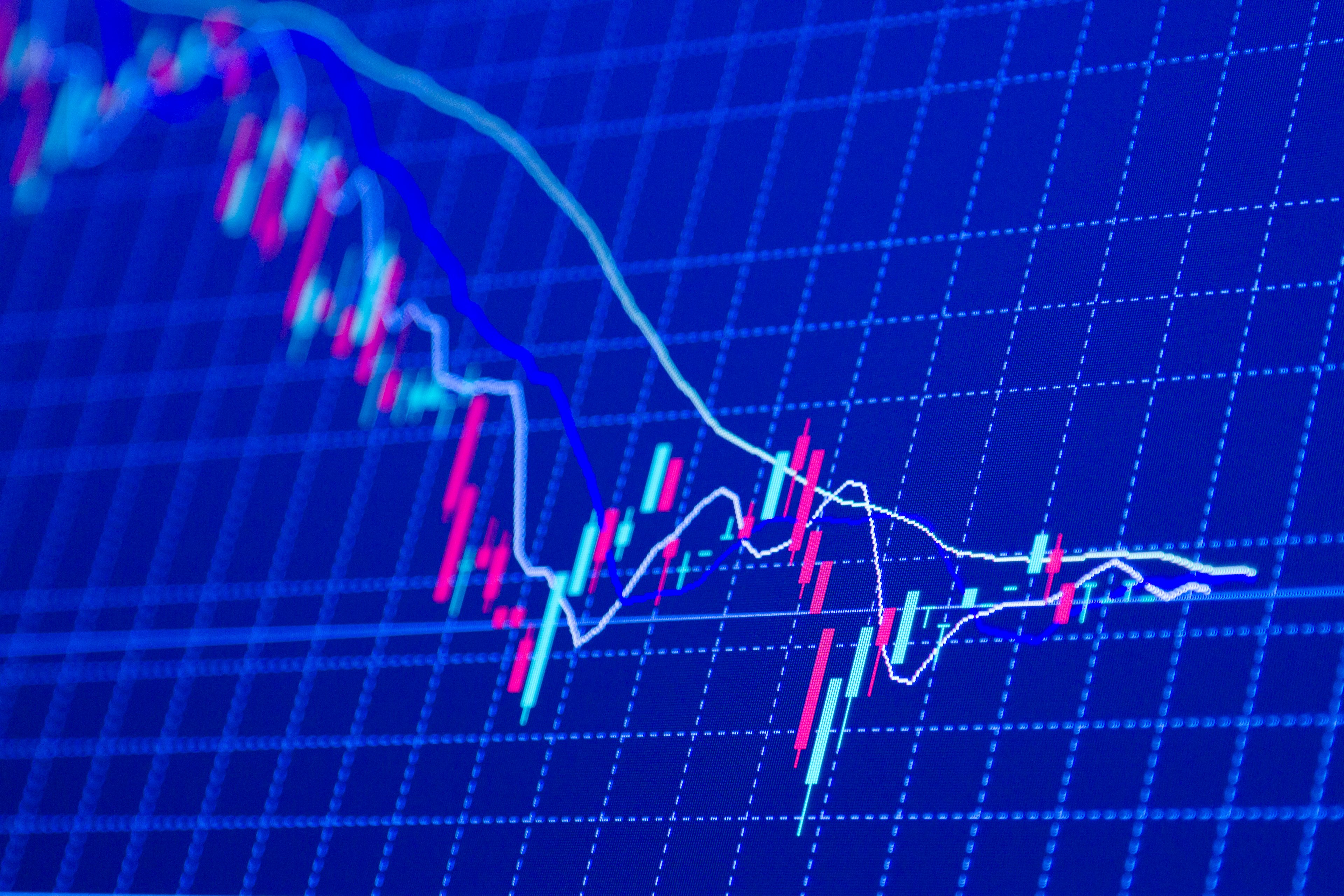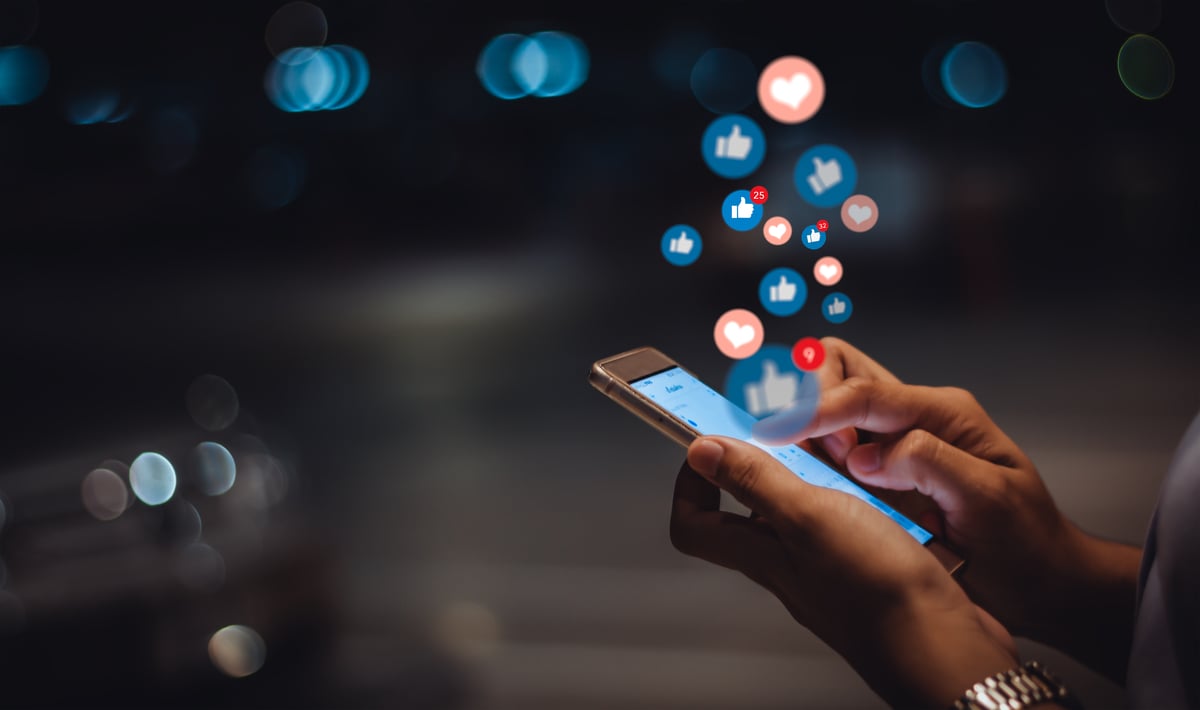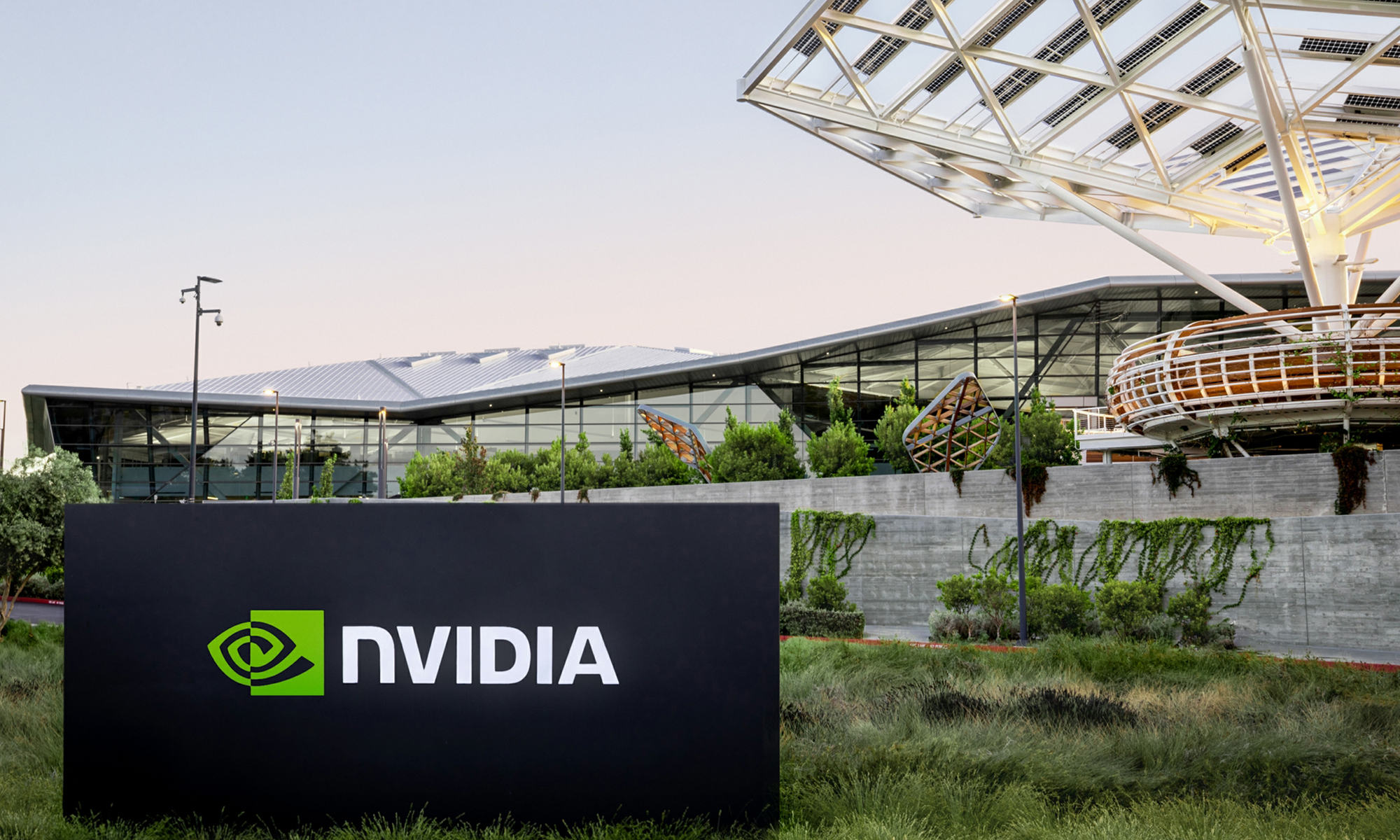In this episode of Industry Focus: Tech, host Dylan Lewis and Fool.com contributor Evan Niu dive into Alphabet's (GOOGL +1.04%) (GOOG +1.05%) $2.1 billion acquisition of Fitbit (FIT +0.00%). What does Google get out of Fitbit that it couldn't make itself? What comes next for Fitbit? How will this change the fitness tracker space going forward?
Also, the guys take a close look at Apple's (AAPL 0.26%) most recent earnings report. Tune in to learn the most important metrics and trends, what this quarter says about Apple's push to a more services-focused narrative, where the iPhone fits in, what the future holds for the trillion-dollar company, and more.
To catch full episodes of all The Motley Fool's free podcasts, check out our podcast center. To get started investing, check out our quick-start guide to investing in stocks. A full transcript follows the video.
This video was recorded on Nov. 1, 2019.
Dylan Lewis: Welcome to Industry Focus, the podcast that dives into a different sector of the stock market every day. It's Friday, November 1st, and we're talking about a big deal in consumer tech. I'm your host, Dylan Lewis, and I've got fool.com's Evan Niu with me on Skype. Evan, what's going on, man?
Evan Niu: We had a winter storm here this week, so it is very cold.
Lewis: It was like a balmy Halloween over in D.C. I almost pulled out the shorts when I was giving out candy. It was warm, and then we got hit with a storm and got cold. I'm not really sure when the fall is going to come here, man.
Niu: [laughs] It threw off my week. The kids' schools were flip-flopping on, are they going to be delayed? Are they going to be open? Are they going to be closed? It was a mess this week.
Lewis: You know what did not throw off my week, Evan?
Niu: What's that?
Lewis: The news that Google is buying Fitbit. I love it when news comes in as we're planning a show, and we can incorporate it without having to wait a week to hit it next week. Just this morning, we got word that Google parent Alphabet will be buying Fitbit. There had been speculation earlier in the week. We were probably going to be doing this show anyways, but now we have some firm details to work with.
Niu: Yeah, there were some reports this week that Google had made an offer, but they didn't say how much, which is obviously a big deal. Now we got the confirmation today that, yeah, they made a firm offer, and they got accepted at $7.35 a share. It's about $2.1 billion on a fully diluted basis. Interesting side note, though, is that we're now seeing reports that Facebook was actually interested too, to buy Fitbit. Fitbit's been on sale for about a month. They've been shopping around. Facebook reportedly made an offer that was about half of Google's. Facebook's been pushing big into hardware lately. Not so successfully. They're actually also testing this tool that makes health suggestions. They are showing some indications that they're interested in getting a little bit into healthcare. But at the same time, can you imagine them getting their hands on all that health data, with all of their privacy scandals? What a nightmare!
Lewis: That would not be good. I'm a little surprised with the low price that Facebook came in at. Fitbit is a stock that has traded at a relatively low valuation because it's had declining sales over the last couple of years, but right now, they've done like $1.5 billion in trailing 12-months sales. If they came in at half of what Google offered, that's just over $1 billion. [laughs] That valuation is a fraction of trailing 12-month revenue. Kind of wild to me.
Niu: Right. I think it shows clearly that they can't be too interested. It doesn't make as much sense for them as it does for a Google or even an Amazon. But, yeah, Google's going to be the new owner of Fitbit.
Lewis: This is a slightly different strategy than what we've seen from Google in the wearables space so far. The strategy that they've had is, we are going to make our operating system, Wear OS, available to all of these people who tend to specialize in devices, let them use it. Very similar to what they did with Android and the smartphones that we know so well now. The strategy has not worked as well as it did for the smartphone market.
Niu: Right. Wear OS been around for like five years now, and it's just never really gained traction in the market as far as the smartwatch market goes, which was pretty new when they announced Wear OS initially. What we've seen happening is that a lot of these big third-party smartwatch manufacturers -- your Samsungs, your LGs -- they've been shifting away from Wear OS. They were on board the first few years, but the devices just didn't really sell very well. So they shifted over toward making their own proprietary platforms. For example, Samsung has Tizen, which powers most of its popular smartwatches. There's still some people that are in there making Wear OS devices, but that platform has really just flopped. It has not made a dent. Whereas Fitbit is now the No. 2 player in smartwatches behind Apple.
Lewis: Yeah, I think the smartwatch maker that most closely uses anything from Google is Fossil, and their market share is somewhere around 4% or 5%, based on some of the recent shipments. Clearly, Google is not commanding this market. But, in buying Fitbit, they are scooping up the No. 2 player. And at this point, Fitbit has 28 million active users worldwide. You think about the purchase price, Google just basically bought all of those for about $75 a person.
Niu: Right. And there's a lot of data in there, of course. Fitbit collects all this health data. They've been building this digital health platform, much like Apple. Both Fitbit and Apple want to help users be able to manage their health data on this platform. But they're very sensitive to the concerns that people are going to worry about privacy issues, because this is Google we're talking about. Not as bad as Facebook's reputation, but still has some valid concerns there. The company has gotten out ahead of this and said, "Hey, no, we're not going to be using your data for ad targeting or anything like that."
Lewis: Yeah. The official statement from Rick Osterloh, their senior VP of devices and services, "Similar to our other products, with wearables, we will be transparent about the data we collect and why. We will never sell personal information to anyone. Fitbit health and wellness data will not be used for Google ads, and we will give Fitbit users the choice to review, move, or delete their data." So, they clearly anticipated that people were going to have some questions about this. [laughs]
Niu: Right. This type of data is just fundamentally very sensitive, since it's your health. Can't think of any type of data that's more sensitive than that. You don't want that getting out there.
Lewis: Exactly. So, when I look at all this, it seems like the logical next step is for Google to start owning their own devices, and not just playing in the software side of this market. We get a little bit of that when we look at the statement that Google issued. They said, "We see an opportunity to invest even more in Wear OS as well as introduce made-by-Google wearable devices to the market." So it seems like that's where Fitbit is going to plug into their overall strategy.
Niu: Right. Obviously, Fitbit is an integrated player. They make the hardware and the software. Whereas Wear OS has been just the software side of it. A lot of people have been expecting Google to come out with a Pixel watch. Actually, people thought that was going to happen this year. That product was reportedly actually killed off a few years back. Now it seems more likely in the cards at some point going forward. They also mentioned that the plan is to basically combine these two platforms, Wear OS and Fitbit OS. Then they're going to license that out to other third-party manufacturers, just like they do with Android. But at the same time, they're going to make their own devices, probably, at some point, as they work to integrate this merger. I think a lot of the uncertainty here is going to be how well Google can execute on merging these operating systems in a cohesive way. That's going to be the big thing to keep an eye on going forward.
Lewis: Now, this is not the first time that Google has bought either technology, IP, what have you, in the wearables market. You go back to early 2019, Google paid $40 million for smartwatch technology from Fossil. We don't know exactly what is under the hood there yet. The rumors that I've read is that it's related to this hybrid technology a lot of people are talking about, where it is a smartwatch, but also something that resembles much more of the classic luxury analog watch that a lot of people tend to wear for fashion. My understanding is that this deal is very intellectual property oriented, though it was kind of an acquihire situation for Google because they were able to bring on, I think, 20 people from the R&D team that put that tech together.
Niu: Right. That deal was announced earlier this year, which also fueled more speculation, including on my part, that they're making this Pixel watch. [laughs] But they haven't done that yet. Have to wait a little bit longer for a first-party Google smartwatch.
Lewis: That's the rundown if you're looking at things from Google's perspective. Now, if you're Fitbit, I think that this is a rough end to a pretty difficult time on the public markets. Fitbit debuted several years ago, and it was a very quickly growing, profitable company that was the de facto name in its space. Things have not gone particularly well for them as a publicly traded business.
Niu: Right. The narrative has really shifted ever since Apple jumped in with the Apple Watch. Fitbit historically had done really well with these fitness trackers. But then, the whole market started to shift on these wearables, from basic trackers to more full-featured smart watches. Basic trackers are still a big business in certain parts of the world, like emerging markets, China for example. But, in developed markets, it's really shifting aggressively toward smart watches. So Fitbit went out and they bought three companies -- Coin, Vector, and Pebble -- and basically combined all of those companies that were on the ropes themselves to create their own smartwatch platform. To their credit, I think they've done a pretty good job, because, obviously, they're No. 2. But, at the same time, it's been really hit or miss. They've had some products do really well, and then they'll turn around and the next one is a complete flop. That's the nature of consumer hardware. You've seen sales come down both in 2017 and 2018. It's a tough market out there when you're a pure play consumer hardware company.
Lewis: The thing that we would come back to, too, Evan is, you look at their balance sheet, I think Fitbit has something in the neighborhood of about $500 million in cash and short-term equivalents. They are competing pretty directly with Apple. Apple has about 200X that on their balance sheet. They are competing in the premium end of this market with a very deep-pocketed competitor. They're going to get some of that help now that they're owned by Google. Hopefully, they'll be able to make things work as the newly acquired business.
Niu: Right. It frees them a little bit to focus on just the product and the actual software and all that stuff, as opposed to worrying so much about profitability, the finances. Now you have this rich parent company, [laughs] you don't have to worry about it.
Lewis: It does remind me a little bit of Whole Foods being acquired by Amazon. Whole Foods was struggling for a bit. They were posting some comps numbers that people weren't particularly fond of. There was this great strategic acquisition that Amazon decided to make, and all of a sudden, that whole narrative has disappeared. It's an asset to Amazon because they have all these physical locations, and they can tie Whole Foods into all these larger ambitions that they have. You might see the same thing play out here.
Niu: Right. It's nice to have someone paying all your bills for you.
Lewis: [laughs] Yeah, if you can find a benefactor, by all means, do it. Alright, we couldn't have you on, Evan, this time of year without also talking about Apple earnings. One of our favorite companies to talk about. Certainly the one that I think you cover best. When you look at the results from Apple this quarter, what do you see?
Niu: It was a pretty solid quarter, particularly as they're closing out their fiscal year. This is the fiscal fourth quarter of 2019. Revenue was up 2% to about $64 billion. iPhone revenue continues to fall, as we've been seeing the past few quarters. iPhone revenue was down 9% to about $33 billion. iPhone 11 is selling pretty well. They're saying it's still the best-selling model. That's the iPhone 11, the more affordable one, the $700 one that comes in different colors, as opposed to the higher-end Pro and Pro Max, which are $1,000 and up. But if you look at revenue outside of the iPhone, so everything excluding the iPhone, it's plus 17%. So, we're still seeing some strength in every segment outside of that core business. They're continuing to really push the services segment, as usual. We can dig into that more here in a minute. Services revenue was up 18% of $12.5 billion. Wearables continues to do really well. They're saying it grew over 50%. Hit new records in every market. Really executing on a lot of fronts here.
Lewis: Yeah, that's the thing that we always have to remind ourselves with Apple. While there are these other segments that are doing so well, the wearables segment posting over 50% growth, services up pretty big, and a high-margin, revenue contributor -- unfortunately, the overall result is going to be very closely tied to what happens with the iPhone.
Niu: Right. They're starting to finally grow these other businesses enough to offset some of the weakness in the iPhone. Here's another interesting thing that's happening, too -- the wearables segment, which includes Home and accessories, is almost the same size as the Mac now, which is incredible. On a trailing 12-month basis, wearables, home, and accessories did $24.5 billion last year. Mac did $25.7. So they're pretty comfortable. They've been introducing more and more wearables beyond just the Apple Watch. For example, AirPods have obviously been popular for a few years now, but they're building on that momentum. They released second-gen AirPods earlier this year. They did Powerbeats Pro a couple of months later. In the past few weeks, they've done AirPods Pro, Beats Solo Pro. They're really betting big on wireless headphones, earphones, in-ear, noise-canceling, a bunch of different types of feature sets, to really keep going that wearables business.
At the same time, the iPad is starting to come back a little bit too with the iPad Pro. They have a really broad lineup now of iPads, really hits every price point and use case you can think of. I think that's also starting to do really well.
Bottom line, net income was $13.7 billion or $3.03 per share.
Lewis: Gotcha! We touched on some of the big stuff, but I'm also a fan of how Apple likes to break out their earnings releases or their numbers in slightly less conventional ways. I think whoever is doing the comparisons for Apple deserves a promotion. The data scientist that is digging in and being like, "We did this amount in revenue. It's a novel data point because of this." They always manage to pull those out in both their earnings releases and the press releases that follow. And we finally got one of those numbers when it comes to their U.S. revenue.
Niu: Right. They crossed $100 billion in U.S. revenue for the first time ever during the fiscal year. I think it actually technically occurred in the second quarter of the fiscal year. That's a pretty big milestone. It shows that even in their core home market, they're still able to really grow and expand their presence.
Lewis: And other non-financial numbers that you think really paint a picture?
Niu: A couple of other side notes that they mentioned on the call. They're about to start offering 0% financing on the iPhone through Apple Card, which is that new credit card they're partnered with Goldman Sachs for. That might help boost sales a little bit because it's integrated, it's very convenient. They noted that traded volumes are about 5X. That's helping them sell more phones into the secondary market at lower prices -- through their partners, of course. That helps grow the installed base, which they can then monetize with services. The iPhone installed base hit a new high. They didn't specify what it is, but they said earlier this year that it's over 900 million. That's a pretty strong number there.
The Watch is still very much in the adoption phase vs. the mature upgrade phase. 75% of buyers are all new to the Watch. Most people that are buying Apple Watches have never had one before. So they're still very much climbing that adoption curve.
Lewis: Much to the chagrin of Fitbit, I'm sure, Evan.
Niu: [laughs] Exactly!
Lewis: You mentioned the benefits of that larger installed base, and the ability to market their services segment to an increasingly larger number of people. What's going on specifically in services?
Niu: They've been really hitting this services point home for the past couple of years. It's definitely worth digging in a little bit more, because that's what Apple wants us to do. Services revenue last fiscal year was $46 billion, which is right on the cusp of hitting that $50 billion target that they had set out to hit next year. They added another 30 million paid subscriptions for the eighth consecutive quarter. Now they have 450 million. That also puts them on track to hit another target they set out, which is to hit 500 million paid subscriptions in 2020. Third-party subscription business grew 40%. The biggest third-party subscription, they said, is less than 0.25% of services revenue. So, this business is still very diversified. You and I talked before about how some companies like Netflix, for example, used to be a pretty big component of this business. Of course, Netflix no longer does iTunes billing. Everyone else is still pretty healthy there, in terms of that business, because it's growing and it's diversified, there's not a lot of risk concentrated on one customer, for example.
They also had a pretty strong quarter for AppleCare. They've been expanding that to cover every product you could imagine. They've shifted toward this indefinite subscription model, where you can basically just pay a monthly fee for as long as you want. It used to be a fixed term, like, you pay for two years of coverage. Now it's like, you can just pay forever.
Lewis: If you're a business, just having someone pay you forever sounds pretty great.
Niu: Yeah. It's all a function of, iPhone prices have been going up a lot, and repair costs have been going up a lot. That nudges people to get more coverage, because the out-of-warranty repair costs are so high. I think that's also helping contribute to the AppleCare business.
Lewis: When we take a step back with this company, I think we need to remind ourselves of some of the changes that they made to how they report their numbers. The biggest one that a lot of people followed was, we're moving away from reporting units when it comes to our iPhone segment, we're only giving you that figure in revenue. You touched on that before. There's another one that I think we need to keep in mind as well.
Niu: Right. Starting this fiscal year, for fiscal 2019, as you mentioned, they stopped giving out unit data. But then they started to provide gross margin data for products vs. services, to really prove to investors how profitable this segment is. And we always knew that, but we've never had the granular detail. I think that providing that has really helped them drive that point home. So now we have two years of data since they provide the year over year comparisons. I think there are some important trends in the services business that investors need to keep an eye on. For example, in terms of sheer gross margin, it's jumped from 58% from the beginning of fiscal 2018 to 64% at the end of fiscal 2019. That profitability is climbing higher and higher over time. At the same time, the services business is becoming a bigger part of the total revenue. It's really having a huge impact on total gross profit. Just as an example, services in the fourth quarter was 20% of revenue, but a third of gross profit.
Lewis: I don't know if the execs at Apple were reading the tea leaves and understanding that, three years ago, iPhone sales were going to start to slow down, and that they needed to create a narrative that people were going to get excited about with this company, but they very successfully did that.
Niu: Right. It's just becoming a huge driver of their profitability. And it's really not subject to the same type of seasonality as the hardware business is, which also, we'll touch on when we get into their guidance. It's worth noting that Apple's always said that they prioritize maximizing gross margin dollars over gross margin percentage, because you can use those dollars to actually go and pay for your R&D expenses. You can't really use a percentage.
Lewis: Evan, you mentioned seasonality. We're heading into the all-important holiday quarter. For advertising businesses, it's a very big quarter. For consumer electronics, very big quarter. Apple, very big quarter. You said $64 billion for this most recently finished quarter. Expectations are a little bit higher for calendar Q4.
Lewis: Right. In the December quarter, they're guiding revenue to $85.5 billion to $89.5 billion. The midpoint of that guidance is above the Street, so it came in better than expected. That's expected to be driven by wearables, services, and iPad, as we saw last quarter. The gross margin guidance was interesting because it was flat on a sequential basis. 37.5% to 38.5%. Normally, we see Apple have gross margin expansion in the December quarter due to operating leverage. But now, we're seeing that services are contributing so much to profitability that when you have a higher mix of hardware products -- over the holidays, they sell so many hardware products -- that actually dilutes gross margin on a percentage basis. I've always said this is a way to mitigate the seasonality that's inherent in consumer hardware. I think that you can see that playing out here, because services is helping to smooth out gross margin. It's not as lumpy as it used to be.
Lewis: Yeah, we are generally huge fans of subscription businesses, or anything that just is something that, once consumers do, they don't have to think about again. They're going to be a customer. A lot of these businesses over on the services side are set up that way.
It seems like Wall Street was pretty happy with the results, and investors generally, pretty happy with the results. We're back right around at all-time highs. We've got a decimal point in the tenths next to that trillion number, $1.13 trillion now. I haven't been checking in on the market cap too much recently, but that's got to be right near all-time highs, Evan.
Niu: Yeah, the stock is trading pretty close to all-time highs. I don't remember how much it went up on the earnings. With a company this big, you can't expect them to move too much.
Lewis: Yeah. We've talked about this company before, we're both shareholders. I think we are past the days of Apple providing some really meaningful share price appreciation to its investors the way it had maybe over the last decade or so, where it was just a phenomenal performer. But you also have a business that offers a pretty good dividend yield, will be buying back shares, continue to opportunistically buy back shares, and has a stellar product that people seem to love.
Niu: To that point, it's actually funny, if you time it out -- of course, we don't recommend trying to time the market, but interestingly, beginning of 2019, the stock was down to like $140. It's up more than 50% for the year. [laughs] That's a pretty wild number right there, as far as your return over the past year for a company this big.
Lewis: Yeah, it's kind of amazing to think that within a year, you could have about 80% returns on a company that is now worth over a trillion dollars. That's why we just stay the course with these big ones that we know are going to do well.
Niu: Yeah. Everything pulled back in late 2018 pretty bad, with a lot of macro stuff. Again, it's all timing and how you frame it, but the opportunities are out there.
Lewis: Yeah. Alright, Evan, thanks for hopping on today's show! Anything else before I let you go?
Niu: No, that's it. Thanks for having me!
Lewis: Alright, man! Listeners, that's going to do it for this episode of Industry Focus! If you have any questions or you want to reach out and say hey, shoot us an email over at [email protected], or tweet us @MFIndustryFocus. If you want more stuff, subscribe on iTunes or wherever you get your podcasts. You can check videos out from the podcast over on YouTube in addition to a ton of other video content that we have over there.
As always, people on program may own companies discussed on the show, and The Motley Fool may have formal recommendations for or against stocks mentioned, so don't buy or sell anything based solely on what you hear. Thanks to Austin Morgan for all his work behind the glass today! For Evan Niu, I'm Dylan Lewis. Thanks for listening and Fool on!





